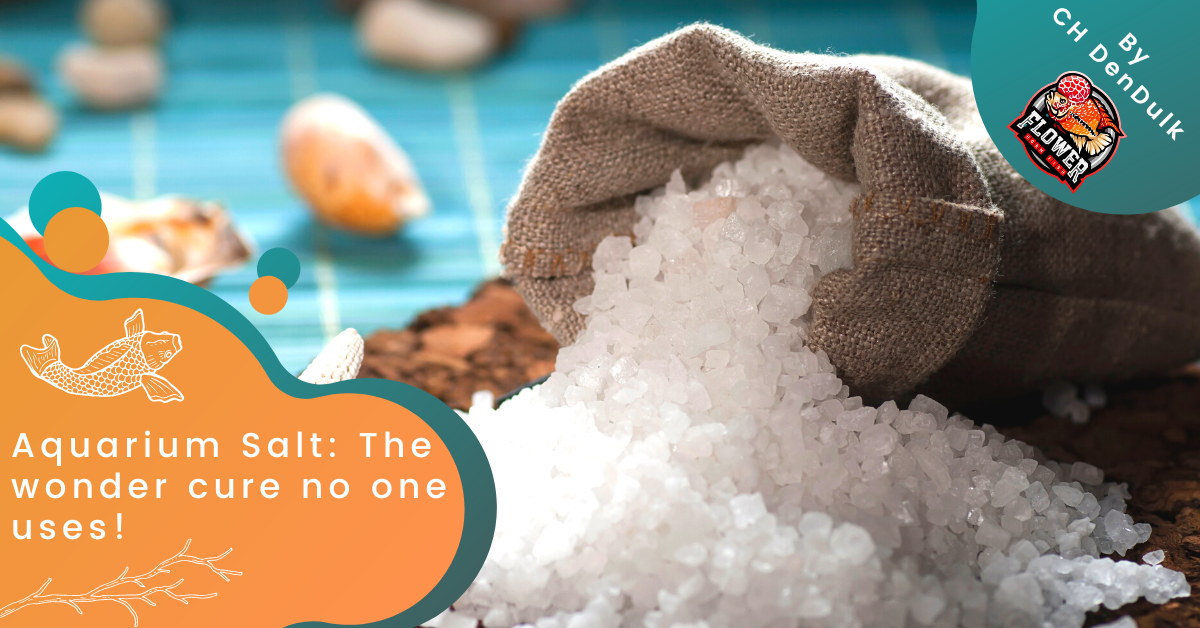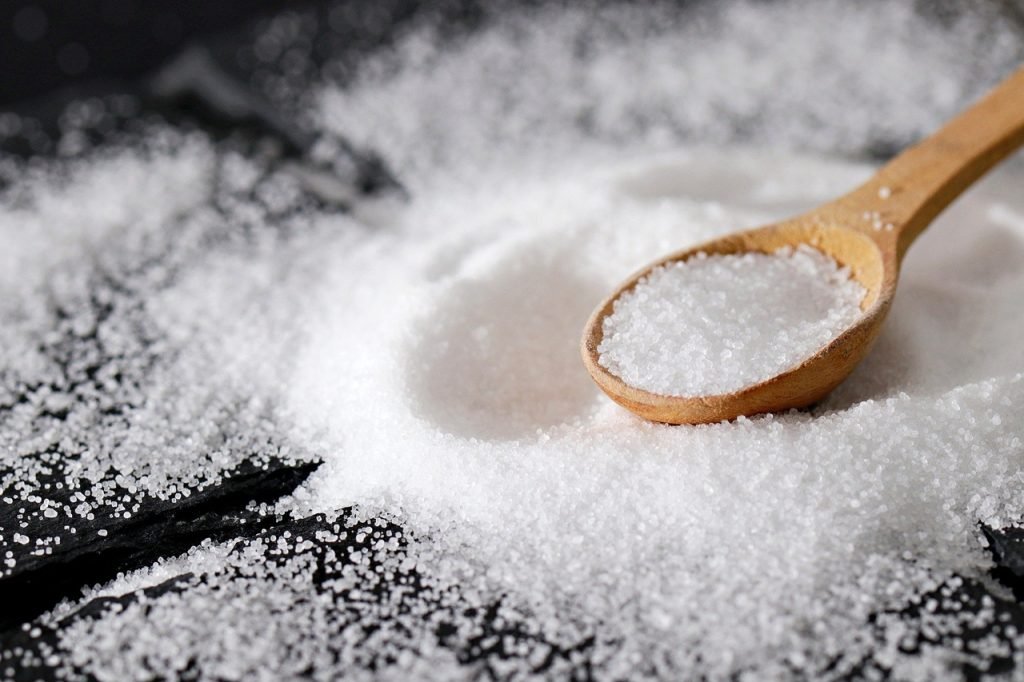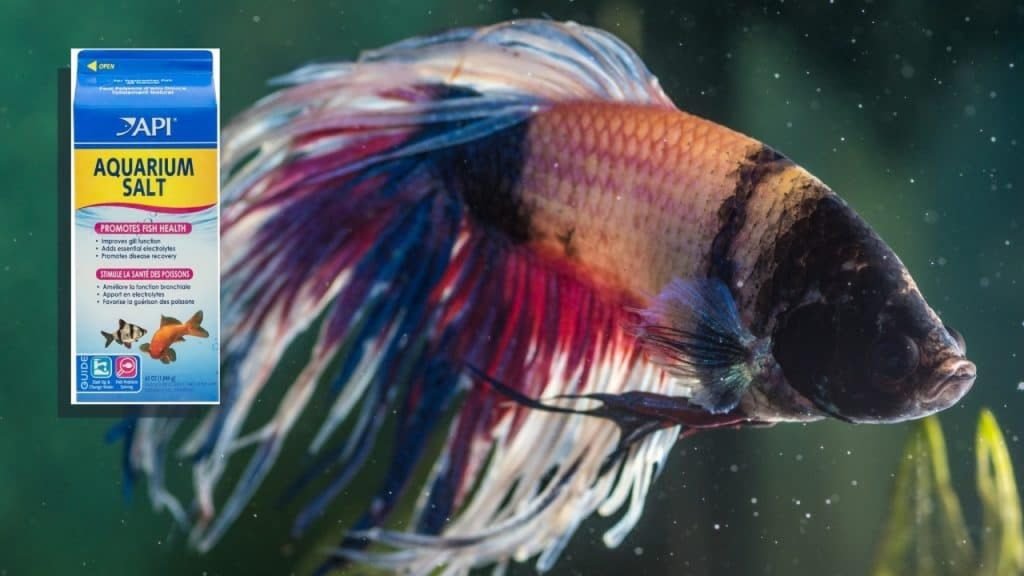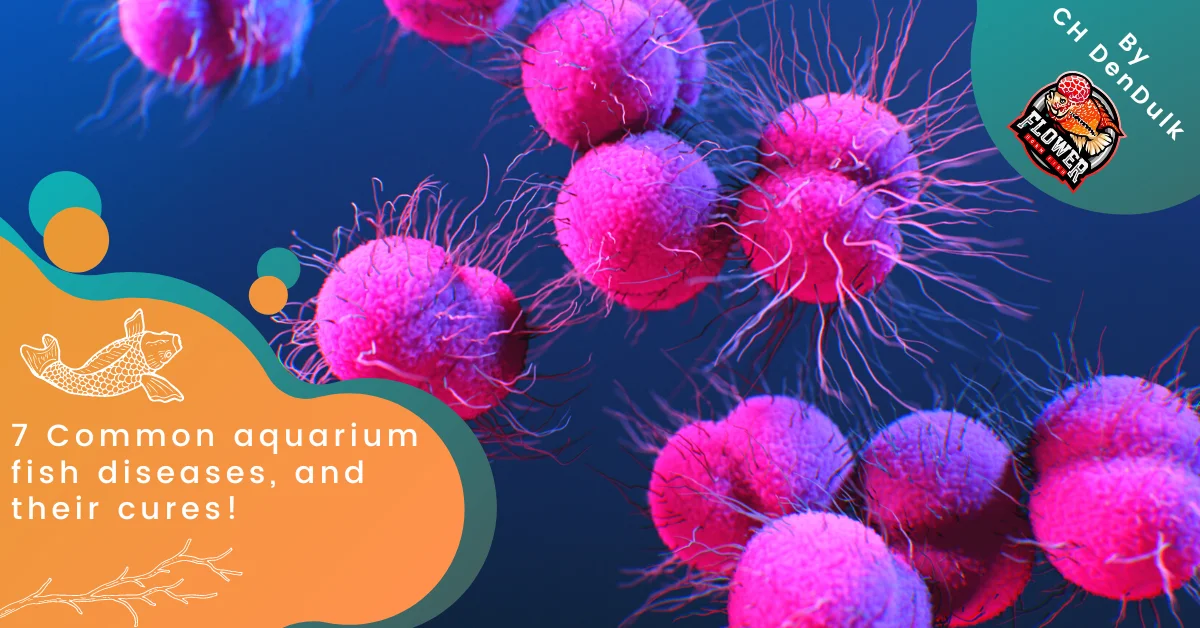Aquarium Salt: The wonder cure no one uses!

Sodium chloride (NaCl) known commonly as salt is one of the best “medications” on the market that’s effective against bacteria, fungus, and external parasites. Yes, you read right, you can add aquarium salt to your freshwater aquarium, and no it won’t hurt or kill your fish, shrimp, or plants. This might seem like old news to experienced fishkeepers like myself, but there are still plenty of people out there that avoid putting salt in their aquariums or aren’t even aware that you can use aquarium salt when their fish are sick, or just add it as a preventative measure. While some fish keepers like myself recommend dosing it all the time to provide fish with essential electrolytes and minerals that they need, others only use it when their fish are ill. Irrespective of how you use it, salt is a great natural remedy for most of the common tropical fish illnesses you might come across. And as a bonus it is readily available, never expires, and can be used in low to high concentrations depending on the situation and illness you are dealing with.

How Exactly Does Aquarium Salt Work?
So how does salt help you fight nasties like bacteria, fungus, and external parasites? This is where high school chemistry comes into play. Salt basically kills by dehydration. By adding salt to your aquarium, you raise the salinity (salt content) of your aquarium water. This means water and moisture get sucked out of bacteria, fungus, and external parasites, this process is called osmosis which tries to balance the salt concentration between the water and the animals living in it. Bacteria, fungus, and external parasites dehydrate faster than the fish in your aquarium due to your fish being larger and having more water stored inside their bodies.
Can I Use Normal Table Salt?
Nope here you have to be extremely careful here, you should ONLY use Aquarium salt or Kosher salt. Also, avoid marine salt or Epsom salt. Why, you might ask? Well, some table salt brands contain anti-caking agents and agents to extend the shelf life of salt, which is extremely toxic to your fish. And obviously, marine salt is only used for marine aquariums.
Should I Use Salt Each Time I Do A Water Change?
Yes absolutely, aquarium salt should be used on a weekly basis (After each water change) as a preventative measure or health booster. I recommend “micro-dosing” with salt. I use it to add minerals and the good stuff fish needs to stay healthy, I highly recommend adding one level tablespoon of aquarium salt for every 20 liters (So if you change 40 liters of aquarium water then you add two level tablespoons to that water.) of aquarium water you change during your weekly water changes.

How Do I Add Salt To My Aquarium?
You can pour the salt directly into the aquarium or hospital tank, but what I like to do is take a water pitcher or container and fill it with some aquarium water and mix the salt in it till it’s dissolved, then pour it slowly into the aquarium. Repeat until all the salt has dissolved into the water that you are mixing it with.
Will Salt Kill My Aquariums Inhabitants?
At lower dosage levels it won’t kill your fish, plants, snails, or shrimp will do just fine using the micro-dosing method I recommended earlier. But at higher levels, it will affect plants, shrimp, and snails, especially scaleless fish. Scaleless fish species do not have the added barrier that scales provide, so they cannot tolerate too much salt. The Corydoras catfish, Plecostomus, and Clown loaches are particularly sensitive to Aquarium salt. Always be careful when measuring the salt because it’s easy to overdose the amount, and unlike most medications, salt does not break down over time.
How Do I Calculate The Correct Dose to Add?
Salt comes in three dosing levels from 1 being mild, and 3 being extreme. After the initial first full dose only dose the water you are changing each week with salt. Here are the dosing levels:
- Level 1: 1 level Tbsp of salt per 20 liters of aquarium water. This is what I like to use in my aquarium and what I call “micro-dosing”. This helps with our fish’s slime coat, causing the fish to produce more beneficial mucus on its skin that can block some parasites and bacteria from reaching its body. This will also help with mild outbreaks of Ich (Whitespot) and other mild fungal infections. Dosing this level of salt is safe for virtually all of your fish, plants, snail, and shrimp.
- Level 2: 1 level Tbsp of salt per 15 liters of aquarium water. Level 2 treatment treats a wider range of illnesses, so if you have a horrible outbreak of say Ich (Whitespot), Fungus, Finrot, or Popeye then this dosing level will work great. Using this dosage level you are basically at the border of what some catfish, plants, snails, and shrimp can take.
- Level 3: 1 level Tbsp of salt per 10 liters of aquarium water. This is the final and highest level of dosage, this level of dosing will knock out nearly everything. The downside is that this will either hurt or outright kill any catfish, plants, snails, and shrimp you might have. So I highly recommend using it in a hospital tank, or if you have none of the above in your aquarium.

What Other Benefits Does Salt Have?
In an extreme case of your fish suddenly getting exposed to high levels of nitrates, it is possible to reduce the effect of the nitrates on your fish. This will also give your fish a fighting chance to survive by just simply adding salt at level 1 dosage levels. This prevents methemoglobin toxicity by blocking the nitrites being absorbed through the fish’s gills and into their bloodstream. Which will give you a chance to do a proper water change and save your fish.
In Closing:
Salt is an extremely versatile “medication” that all fishkeepers should have close at hand. It does not expire and will last you a very long time while being extremely cheap. Not to mention it is an extremely natural way of treating your fish for bacteria, fungus, and external parasites. Happy fishkeeping!










